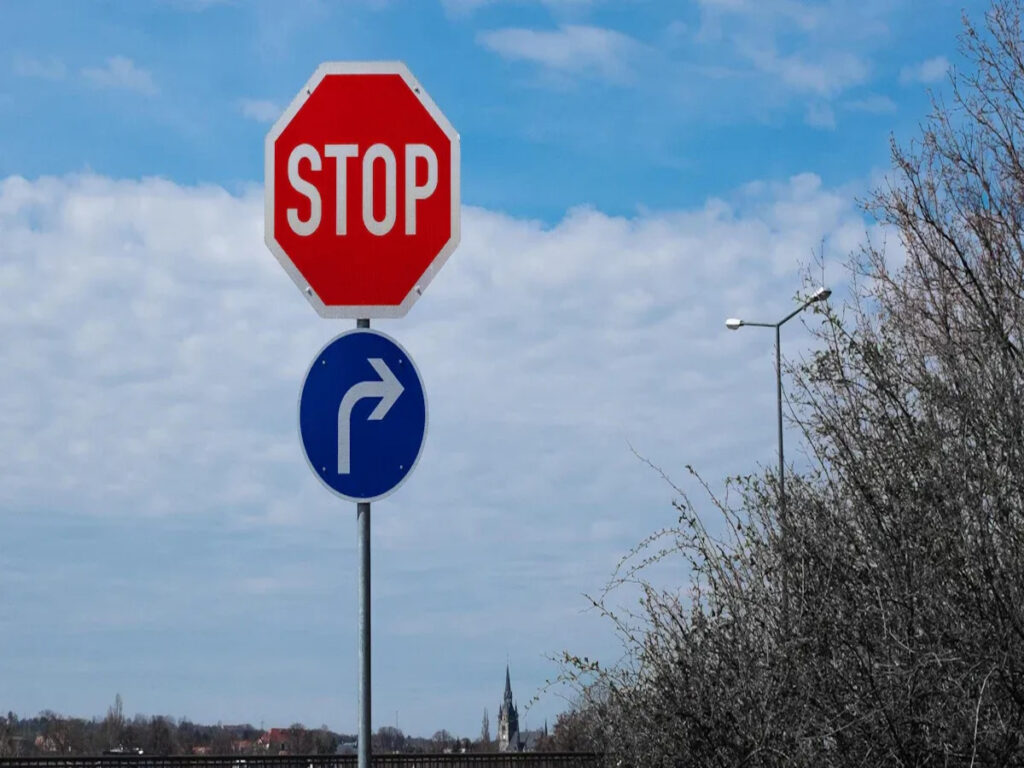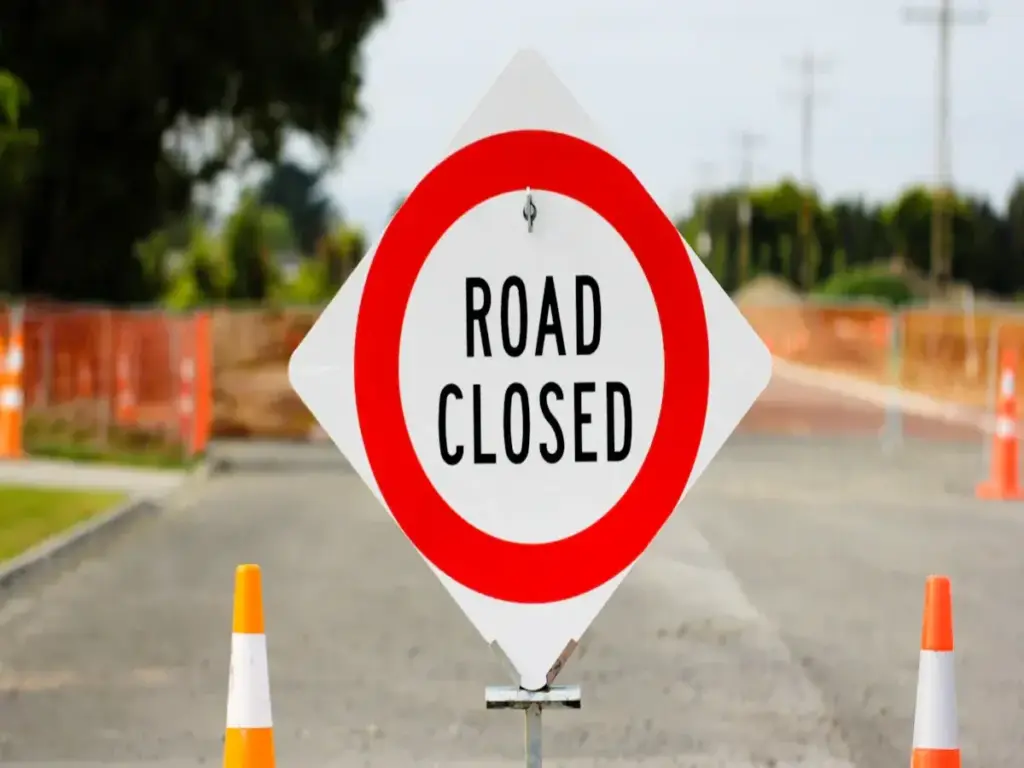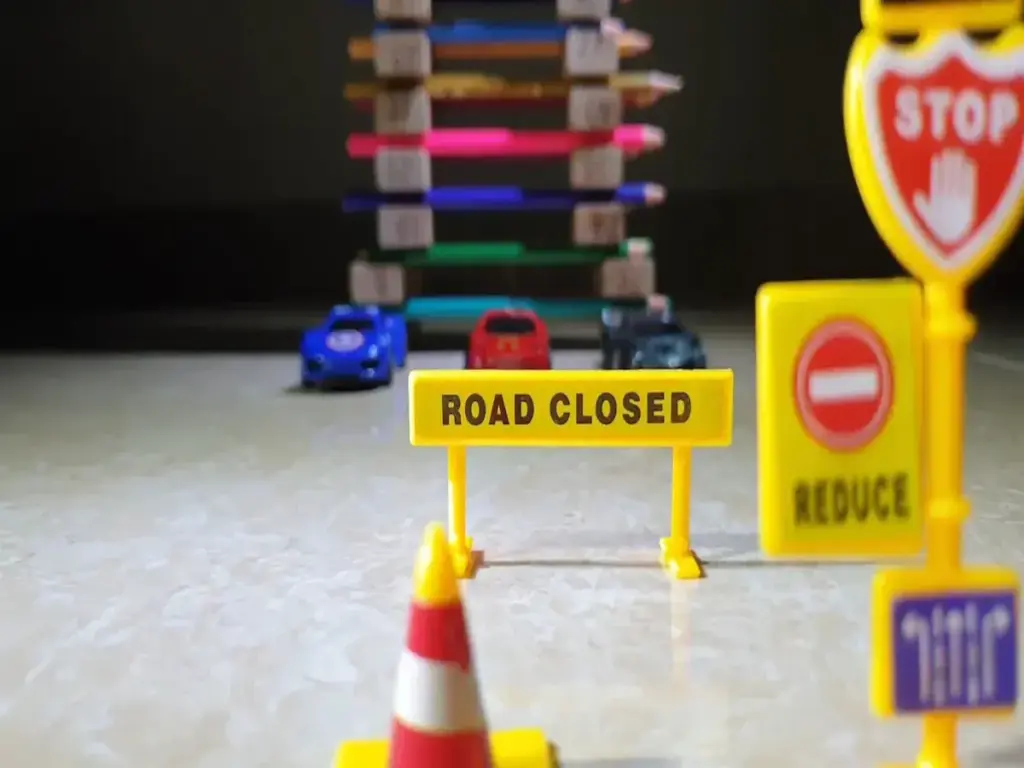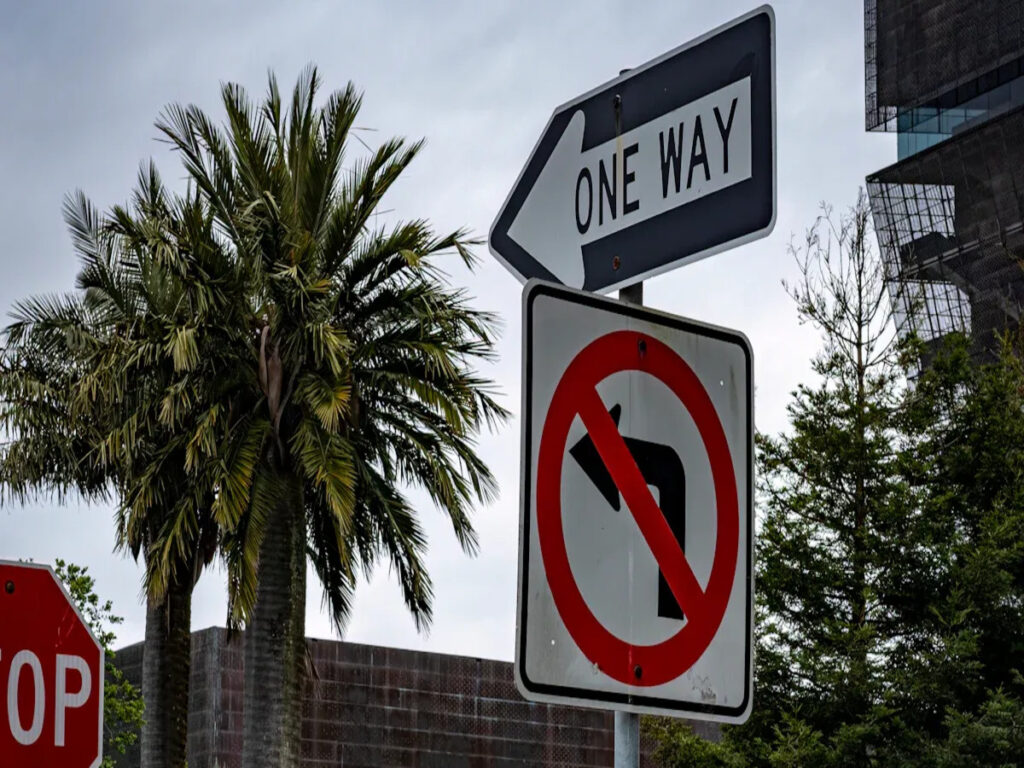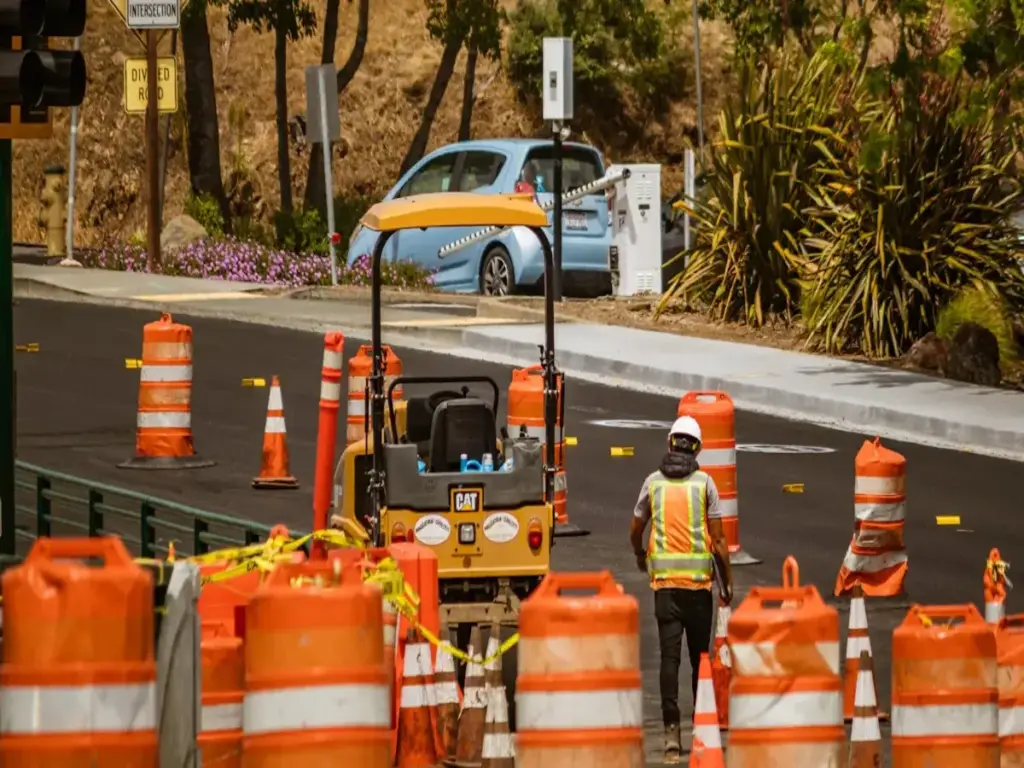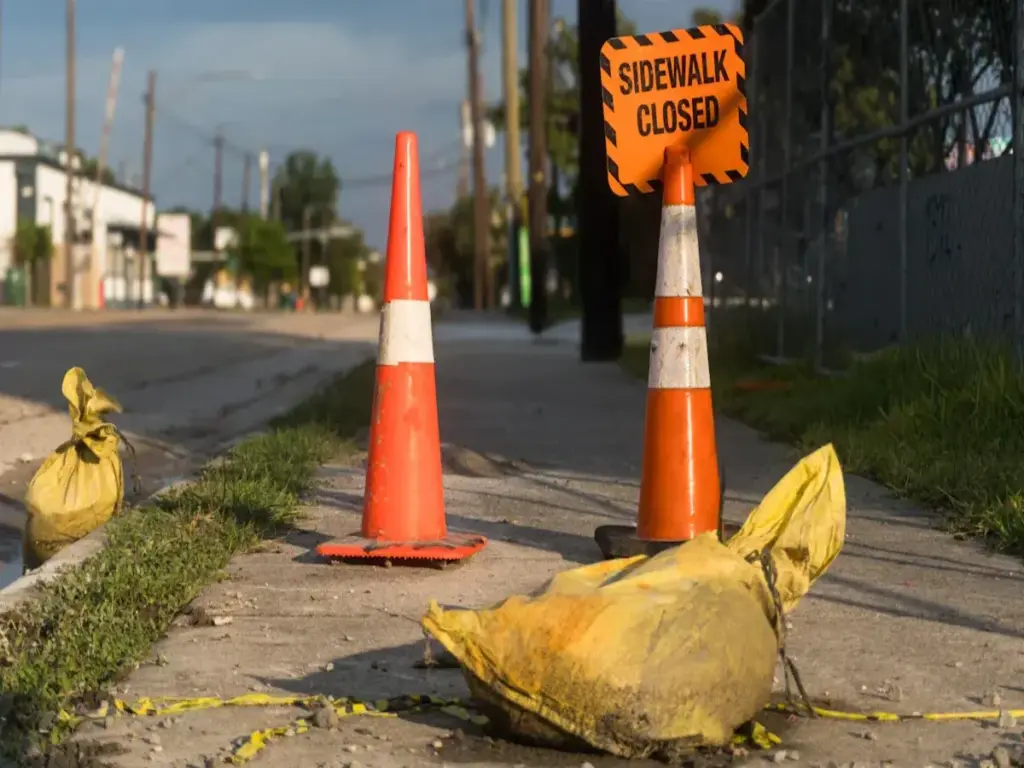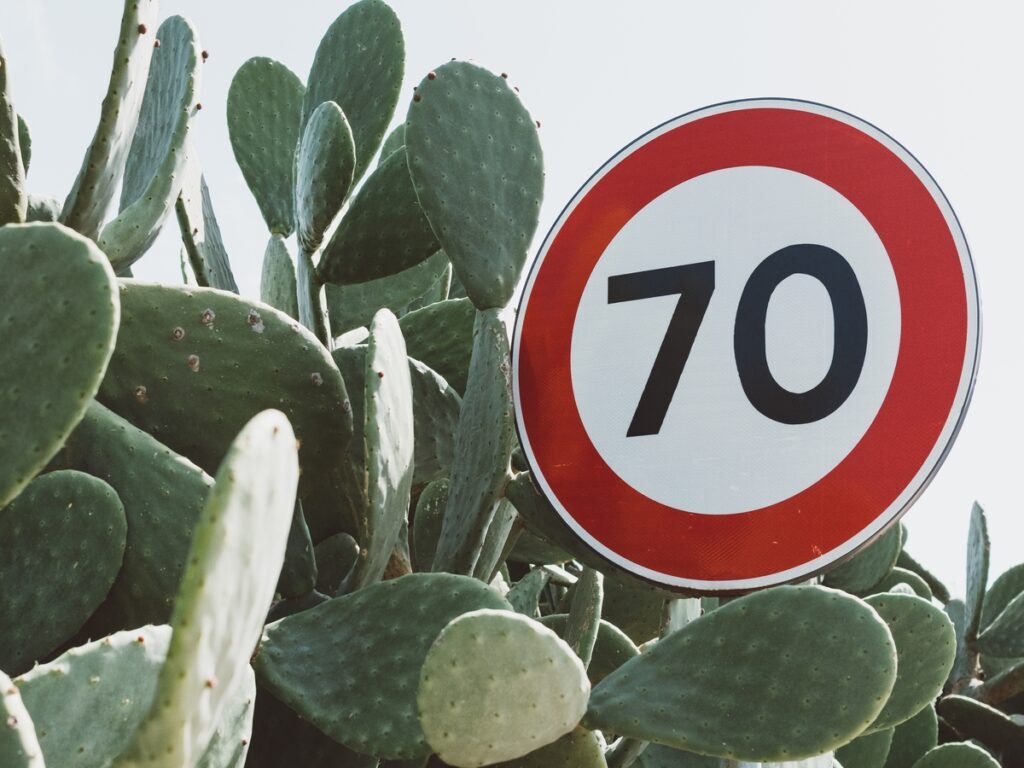
として 1742 速度制限標識がどこに行くかについての厳格なルールがあります. これらのルールは、ドライバーが明確で迅速な情報を得るのに役立ちます. 道路当局, 請負業者, 署名メーカーはこれらのルールに従う必要があります. これは法執行機関に役立ち、道路を安全に保ちます. 間違った場所に標識を置くことは非常に危険です. 例えば, 間 1.7% そして 2.6% ビクトリアでの道路死の, 南オーストラリア, クイーンズランドは、欠落またはひどく配置された標識にリンクされています. これには速度制限も含まれますが、 標識を停止します.
| 州 | % 不適切な標識設置に関連した死亡者数の割合 |
|---|---|
| ビクトリア | 2.6% |
| 南オーストラリア | 2.0% |
| クイーンズランド | 1.7% |
こういったリスクを軽減するには, AS を理解し、対応するサインサプライヤーと協力することが不可欠です 1742 配置要件. オプトラフィック 完全に準拠したものを提供します 交通安全標識 安全を確保する交通制御ソリューション, 合法的な, あらゆる種類の道路プロジェクトにわたる一貫した標識.
キーテイクアウト
- 制限速度標識は、速度が変わる場所ではすぐに進まなければなりません. これにより、ドライバーは新たな制限を明確かつ早期に通知できるようになります。.
- 長い道路や交差点の後のリピータ標識は、ドライバーに制限速度を知らせるのに役立ちます. これらの標識は衝突事故を減らし、スピード違反を止めるのに役立ちます.
- 急なカーブや大きな速度変更の前の標識には、警告および勧告の標識が使用されます。. これらはドライバーが安全に減速するのに役立ちます.
- すべての速度標識は遠くからでも見えやすくなければなりません. 反射素材を使用する必要があります. 混乱を避けるために頻繁にチェックする必要があります.
- 適切な標識の設置と注意は法的規則に従ってください. これによりドライバーの安全が確保され、すべての人にとって道路がより安全になります.
配置の原則
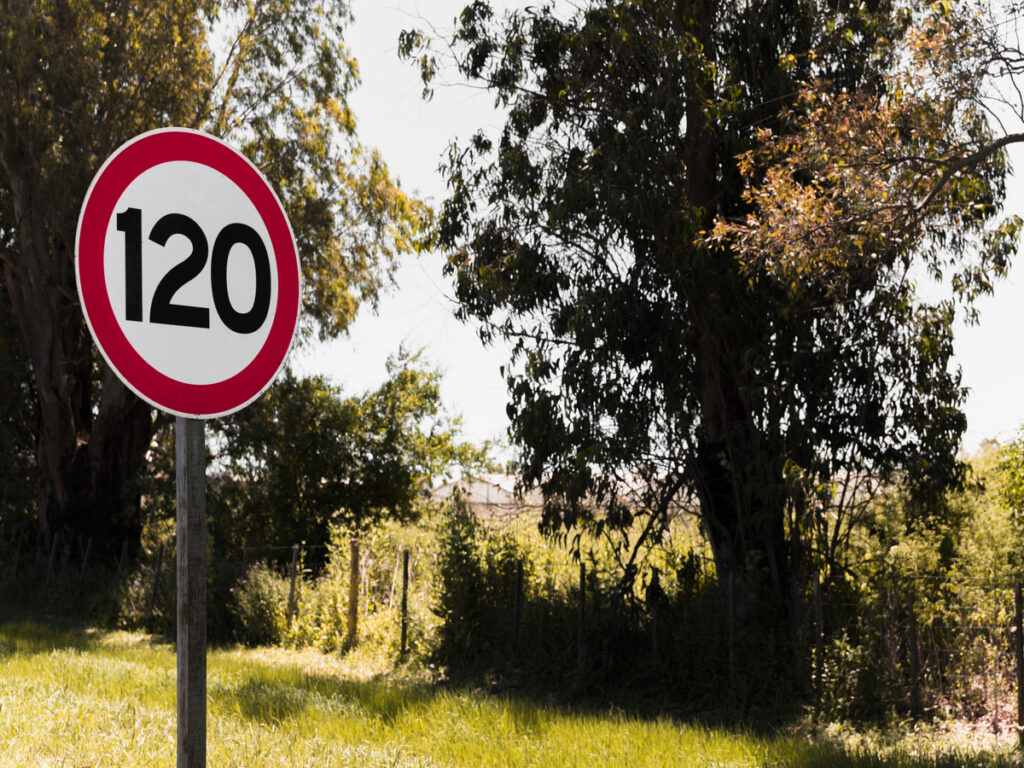
スピードゾーンの開始
すべての速度ゾーンは明確な速度制限標識から始まります. として 1742.5 これらの標識は速度が変わる場所にあるはずだと言う. ドライバーはゾーンに入る前に新しい制限を確認する必要があります. 車線の多い道路では, 標識は両側にあります. これにより、すべてのドライバーがそれらを確認できるようになります. 標識には標準的なシンボルと光沢のある素材が使用されています. これにより、誰もがすぐに理解できるようになります. これらのルールは国際的なベストプラクティスに従っています. 彼らは標識を見やすく、すべてのドライバーにとって同じものにすることに重点を置いています。.
追加サインとリピーターサイン
リピーターの制限速度標識はドライバーに制限速度を注意させます. 長い道路やドライバーの注意力が散漫になる場所では重要です。. 当局はこれらの標識を定期的な場所に設置しています. 大きな交差点やブロックの真ん中も通過します. 研究によると、時速20マイルゾーンでリピーター標識を増やすと速度違反が軽減されることが判明. 平均速度は少なくとも時速1マイル低下する可能性があります. これは、 6% ドロップインクラッシュ. 議会が認識と強制力を持ってリピーターサインを使用する場合, 速度は時速4マイル低下する可能性があります. これによりクラッシュをほぼ削減できます 24%. 明確で繰り返し表示される標識は、道路の安全を確保し、ドライバーにルールを遵守させるのに役立ちます.
速度変更前
変更前の速度制限標識はドライバーの安全を確保します. ドライバーには減速または加速する時間が必要です. として 1742.5 警告標識と速度勧告標識を示唆します. これらは、急なカーブや速度の大幅な低下の前に重要です. 以下の表は、速度変更前に標識を設置する最適な方法を示しています。:
| 実践面 | おすすめ |
|---|---|
| 事前警告サイン | 曲線の鋭さと工学的判断に基づいて水平線標識を使用する. |
| 速度勧告の銘板 | アドバイザリー速度が以下の場合に必要 10 公示速度を時速以上下回る; で提案されました 5 マイル/時の差. |
| 設置距離 | 安全に反応できるよう標識を十分前方に設置してください. |
| 補助装置 | カーブの始点で組み合わせ標識を使用して、ドライバーに速度を落とすよう注意を促します. |
| シェブロンアライメントサイン | 速度差がある場合に必要 15 MPH以上; で提案されました 10 MPH. |
| 標識の可視性 | 夜間でも標識が見えるように光沢のあるシートを使用. |
| 連続速度情報 | 勾配速度制限を使用してドライバーが安全に減速できるようにする. |
| 可変速度制限標識 | 天候や交通状況に応じて標識を変更し、ドライバーがルールを守れるようにする. |
研究によると、早期かつ安定した速度情報がドライバーの安全な減速に役立つことが判明. これにより追突事故も軽減されます. 兆候が遅すぎる、または明確でない場合, ドライバーが混乱して衝突する可能性がある. 追加のデバイスを使用して標識を適切な場所に設置すると、ドライバーがルールを遵守し、道路の安全を維持できるようになります。.
道路の特殊な機能
一部の道路には急なカーブがあります, 丘, 見えにくい場所や. これらには特別な注意が必要です. 当局は勧告速度標識を使用している, 山形の整列標識, ドライバーに警告する警告標識. ドライバーが反応する時間を確保できるよう、標識は十分に離れた場所にある必要があります. 鋭い曲がり角, 水平線と推奨速度標識の両方を使用すると、次のような事故による怪我を減らすことができます。 13%. 怪我をしない事故も起こる可能性がある 29%. 光沢のある素材と適切な高さにより、夜間や悪天候でも標識を確実に見ることができます。. これはオーストラリアおよび国際基準に一致します. 各道路の適切な場所に標識を設置することが重要です.
スピードゾーンの終わり
スピードゾーンの終わりで, “終わり” 速度制限標識を使用しなければなりません. これらの標識はドライバーに通常の制限速度に戻るよう指示します. これにより混乱がなくなり、ドライバーが速度を変更できるようになります。. パッティング “終わり” 適切な場所に標識を設置することで、混合メッセージを回避し、法律を守ることができます. として 1742.5 他の速度標識を近くに置いてはいけないと言う “終わり” サイン. これで誤解がなくなる. 標識は頻繁にチェックして、鮮明で見やすい状態であることを確認する必要があります. これにより、ドライバーの安全とルールの遵守が確保されます。.
速度制限標識: 視認性と距離
可視性基準
として 1742.5 ドライバーが速度制限標識をどの程度よく見る必要があるかについて厳格なルールを設定する. ドライバーはこれらの兆候を早期に発見する必要があります, 悪天候や夜でも. この規格では、標識は道路の速度と一致する最小距離から視認できることが求められています. 例えば, に 60 km/h道路, ドライバーは少なくとも次の方向から標識を見なければなりません 80 数メートル離れています. で 100 km/h道路, 最小距離は次のように増加します 150 メーター. サインを使用する必要があります 反射材 AS/NZSを満たす 1906. これにより、ヘッドライトの下でも標識が明るく鮮明に保たれます。. 道路管理者は樹木をチェックしなければならない, ポール, または駐車車両が視界を妨げないこと.
ヒント: 定期的なメンテナンスにより、標識を見やすく効果的に保つことができます.
配置距離
安全のためには正しい配置距離が重要です. として 1742.5 速度制限標識をどのくらいの間隔で設置するかについて明確なガイダンスを提供します. 都市部, リピーターのサインは、次の間隔で表示されます。 200 に 400 メーター. 田舎道で, 距離は次まで伸びることができます 1 標識間のキロメートル. 交差点で, ターンの直後に新しい標識が表示される必要があります, ドライバーが正しい速度を知ることができるように. 標識は近づきすぎてはいけません, これはドライバーを混乱させる可能性があるためです. 標識は離れすぎてはいけません, またはドライバーが制限を忘れる可能性があります.
| 道路タイプ | 最小可視距離 | リピーターサインの間隔 |
|---|---|---|
| 都会的な (≤ 60km/h) | 80 m | 200–400m |
| 田舎 (≧80km/h) | 150 m | 500 m~1km |
取り付けと位置決め
取り付けの高さと位置は、ドライバーが速度制限標識をどの程度認識できるかに影響します. として 1742.5 標識は少なくとも設置しなければならないと述べています 1.5 都市部の地上数メートル. 農村部で, 最小の高さは次のように増加します 2 メーター. 標識の端は次の間にある必要があります。 2 そして 4 道路の端から数メートル. これにより標識が車両から保護されながらも見やすくなります. 標識は対向車に直接面していなければなりません. 道路がカーブしている場合, ドライバーがすぐに見つけられるように、標識はわずかに角度を付ける必要があります. 道路当局は、ドライバーの注意をそらす可能性のある他の標識や物の近くに標識を設置することを避けなければなりません.
夜間と田園地帯についての考慮事項
夜間の運転と田舎道ではさらなる課題が生じる. ドライバーは、暗くなってから反射標識を頼りに制限速度を確認します. として 1742.5 すべての速度制限標識には高級反射シートの使用が義務付けられています. 農村部で, ドライバーが遠くからでも見つけやすいように、標識は大きくする必要があります. 例えば, a 田舎の制限速度標識 測定するかもしれない 750 直径のmm, 一方、都市の標識は単なるものかもしれません 600 mm. 道路管理者は、ヘッドライトが必要な距離から標識を照らせるかどうかを確認する必要があります. また、木や丘が視界を遮る場所に標識を設置することも避けなければなりません。.
注記: 標識の乱雑さを避ける. 一か所に標識が多すぎるとドライバーが混乱し、安全性が低下する可能性があります.
デフォルトの速度ゾーン
都市部と農村部のデフォルト
として 1742.5 さまざまなエリアに明確なデフォルトの速度制限を設定する. ほとんどの都市部では, デフォルトの速度制限は 50 km/h. これは、他の速度標識が存在しない場合に適用されます. 農村部で, 通常、デフォルトの速度制限は 100 km/h. ドライバーはこれらの制限を知っておく必要があります, 道路の安全と交通のスムーズな流れを保つのに役立つからです. 地方議会や道路管理者は、ドライバーがデフォルトの速度ゾーンにいるときを簡単に識別できるようにする必要があります。.
デフォルトゾーンの標識
当局は速度制限標識を使用して、デフォルト以外のゾーンの開始と終了を示します. ドライバーが標識の速度ゾーンを逸脱したとき, デフォルトの制限が適用されます. 言葉を使ったサイン “終わり” ドライバーに特別速度ゾーンが終了したことを示す. 場合によっては, 当局はドライバーがデフォルト速度を覚えられるように注意喚起の標識を使用している. 例えば, 後 40 km/h スクールゾーン, の “終わり” 標識はドライバーに通常の制限に戻るよう指示します. 適切に設置することで混乱を防ぎ、安全運転をサポートします.
ヒント: 常にチェックしてください “終わり” デフォルトの速度がいつ適用されるかを知るための標識または速度制限標識の有無.
特別エリア
一部の地域では特別な速度制限が必要です. 学区には下限が設けられていることが多い, のような 40 km/h, 特定の時間帯に. 共有ゾーン, 車と歩行者が混在する場所, 以下のような制限がある場合があります 10 km/h. 道路工事区域では、安全のために一時的な標識を使用して速度を低く設定しています. 当局はこれらのゾーンの開始と終了に明確な標識を設置する必要があります. また、ドライバーが夜間や悪天候でも標識を視認できるように、反射材を使用する必要があります。.
法的意味
制限速度標識が欠けているか不明瞭であると、重大な問題が発生する可能性があります. ドライバーは正しい速度を知らない可能性があります, 罰金や事故につながる可能性があります. 標識がないか、標識が見えにくい場合、裁判所はスピード違反の罰則を執行できない可能性があります. 道路管理者には AS に従う法的義務がある 1742.5. 標識を頻繁にチェックし、問題があればすぐに解決する必要があります. 適切な標識はドライバーを保護し、法律が意図どおりに機能するのに役立ちます.
注記: 明確で正しい速度制限標識は、誰もが安全を確保し、法的トラブルを回避するのに役立ちます.
マルチゾーン配置ロジック
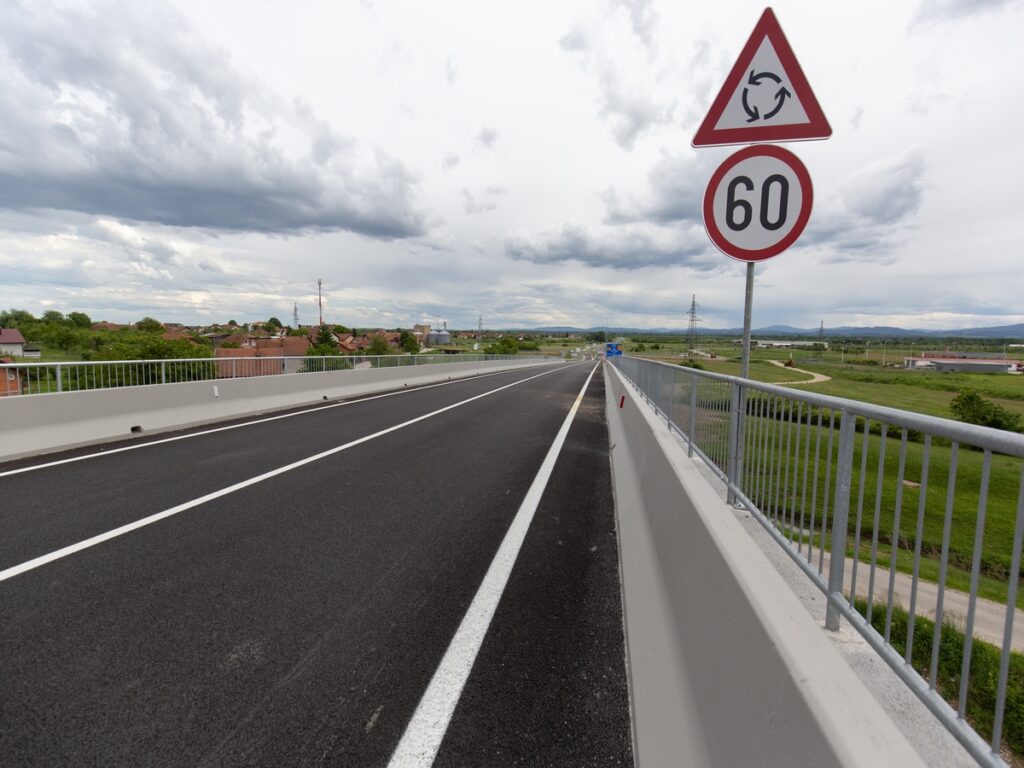
ゾーン移行
同じ道路でも速度ゾーンが変わることがある. として 1742.5 それぞれの変化には明確な兆候が必要だと言う. 新しい制限速度標識は、速度が変わる場所の右側に進まなければなりません. ドライバーは新しい制限がいつ始まるかを推測する必要はありません. これらのポイントでは緩衝ゾーンは許可されません. 標識は交通に面し、独立して設置されている必要があります. 他の標識を近くに置かないでください. これにより、ドライバーの混乱を防ぐことができます. 速度変化が多い道路の場合, それぞれが独自のサインを必要とします. 例えば, そこから道が通っているなら 100 km/h to 80 km/h, それから 60 km/h, 変化するたびに標識がなければなりません.
ヒント: 道路が変わる場所では常に新しい速度標識を探してください.
多車線の道路
複数車線の道路や分断された道路では特に注意が必要です. として 1742.5 各車道には独自の速度制限標識が必要だと言う. 3車線以上の道路では, 標識は両側にあるべきです. これにより、すべてのドライバーが限界を認識できるようになります, たとえ大きな車が視界を遮っても. 分断された道路の場合, 各方向には独自の標識が必要です. 標識は木で隠れてはいけません, ポール, または他のこと. すべての車線で標識がはっきりと見える必要があります.
| 道路タイプ | 標識の設置要件 |
|---|---|
| 単一の車道 | 左側に標識が1つあります |
| デュアル車道 | 方向ごとに 1 つの標識 |
| 複数車線 | 両側に標識あり |
交差点とラウンドアバウト
交差点やラウンドアバウトでは制限速度が不明確になる可能性がある. として 1742.5 大きな交差点ごとに速度制限標識を設置しなければならないと言う. これにより、新しいエリアに入るときにドライバーに適切な速度を思い出させます。. ラウンドアバウトで, 交通標識は出口の後にあるはずです, エントリー前ではない. これは、ドライバーが出発時に速度を変更するのに役立ちます. 複雑な交差点では、明確にするために追加の標識が必要な場合があります. 標識は信号機やその他の重要な信号の近くに設置してはなりません.
注記: 交差点での明確で繰り返しの標識は、ドライバーの安全を確保し、法律を遵守するのに役立ちます.
取り付けと間違いの防止
インストール前のチェックリスト
交通標識を設置する前に, チームはチェックリストを使用する必要があります. これにより、標識が見やすく、正しい方向を向くようになります。. チェックリストには次の手順が含まれている必要があります: ドライバーが遠くからでも標識を視認できるようにする. 光沢のある素材が AS/NZS を満たしていることを確認します 1906 ルール. 標識の高さと道路からの距離を測定します, ASに続く 1742.5. 標識が向かってくる車の方向を向いていることを確認してください. 木や駐車した車など、標識を妨げる可能性のあるものを探します。. 短時間看板を立ててみて、昼と夜で見えやすいか確認してください。.
ヒント: 常にさまざまな速度で走行する車で標識をテストし、ドライバーが標識を視認できるかどうか、レーダーが正常に機能するかどうかを確認します。.
よくあるエラー
標識を設置するときに間違えると、標識の有用性が低下し、安全性が低下する可能性があります. 以下の表は、 よくある間違い そしてそれらを止める方法:
| よくあるエラー | 説明 | 予防方法 |
|---|---|---|
| 不適切な位置合わせ | レーダーやディスプレイがまっすぐでない場合, それはうまくいきません | ガイドに従って直角に調整してください; 最初にテスト設定を試してください |
| 日陰の場所に設置する | ソーラーパネルは日陰ではうまく機能しません, だから看板は力を失うかもしれない | アプリを使って太陽の軌道を確認する; 木を切り戻す; 必要に応じて他の電源を使用する |
| 大型車両により設置が妨げられる場合 | 大型車は小型車の標識を妨げる可能性があります | 標識をより高いところに設置する; トラックの混雑するエリアを避ける; 混雑時に標識が見えるか確認する |
| 道路から遠すぎる取り付け | 標識が遠すぎる場合, ドライバーとレーダーが認識できない可能性があります | 標識を端から 5 ~ 12 フィート離してください; 見やすいようにしてください |
| プリアライメントテストをスキップする | 最初にテストしないと、レーダーとディスプレイが正しく動作しなくなる可能性があります | 最終インストールの前に必ず一時的なセットアップでテストしてください |
| 急カーブ後の取り付け | 標識がカーブの後にある場合, ドライバーとレーダーが認識できない可能性があります | 直線道路には標識を設置する; ドライバーが少なくとも 100 標識が見えるまでメートル |
| チルトブラケットを使用せずに急な上り坂/下り坂に取り付ける場合 | 丘の上の標識は傾けないとよく見えません | チルトブラケットを使用する; 最初に一時的なセットアップでテストしてください |
| レーダーの見通し線を無視する | 邪魔な物があるとレーダーの測定値が間違ってしまう可能性があります | 木やその他のものを撤去する; 他の道路用具の近くに標識を置かないでください |
承認とレビュー
道路管理者は標識が設置される前に「はい」と言わなければなりません. AS に従っていることを確認するために計画をチェックする必要がある 1742.5. 看板が立ってから, チームは必ず 高さを確認してください, 角度, そしてそれが見えるなら. 定期的なチェックにより、色あせた標識や視界を妨げる新しいものなどの問題を発見できます。. 当局は標識を点検し修正したときのことを記録すべきである.
注記: 嵐や道路工事の後に標識をチェックして、標識が正常に機能するようにする.
請負業者の推奨事項
請負業者は看板を安全に適切な場所に保管するのに役立ちます. 良い手順としては、: 1. ドライバーが見えるように標識を目の高さに設置する. 2. 危険な場所や人が立ち入る場所の前に標識を設置する. 3. 夜間でも標識が見えるよう光沢のある素材を使用. 4. 標識に植物や道具を近づけないでください. 5. すべての入り口に標識を設置する, 短期間の使用でも. 6. 悪天候にも耐えられる丈夫な素材を使用. 7. 標識を毎週チェックし、壊れたものはすぐに修理してください. 8. 看板を頻繁に掃除する, 特に埃っぽい場合. 9. プロジェクトが変わると看板も変わる. 10. 従業員と訪問者に標識の意味と標識がなぜ重要なのかを教える. 11. 安全計画に標識を追加し、全員がルールに従っていることを確認する. 12. リストや地図を作成して、標識の場所とその形状を追跡します.
速度制限標識を適切な場所に設置することは非常に重要です. として 1742.5 標識は明確で見やすくなければならないと言う. これにより、すべてのドライバーが制限速度を知ることができます. 研究によると、動的サインや電子サインは適切な場所に設置するとうまく機能することがわかっています。. 人々が車で通り過ぎる速度を最大で下げることができます 20%. これらの標識は、より多くのドライバーがルールを守るのにも役立ちます, まで 60% コンプライアンスの向上. 急ブレーキをかける人が減りました, それでクラッシュが少なくなります. 道路管理者および請負業者がこの規則を使用する場合, 道路がより安全になる. プロジェクトはうまく進み、法律は遵守されます.
よくある質問
速度制限標識は複数車線の道路のどこに設置すべきか?
速度制限標識は複数車線の道路の両側に表示する必要があります. 各車道には独自の標識が必要です. これにより、すべてのドライバーが制限速度を確認できるようになります, 大型車が視界を遮っても.
当局はどのくらいの頻度で速度制限標識をチェックすべきか?
当局は速度制限標識を定期的に検査する必要がある. 彼らはダメージを探す必要がある, フェード, またはブロックされたビュー. 嵐や道路工事の後, 追加のチェックにより、標識を見やすく効果的に保つことができます.
速度制限標識がないか不明瞭な場合はどうなりますか?
標識がない場合や標識が見えにくい場合、裁判所はスピード違反の罰金を執行できない場合があります. ドライバーが混乱する可能性がある, 衝突の危険性が高まる. 道路当局は法的義務を果たすために問題を迅速に解決する必要がある.
速度制限標識には反射性が必要ですか?
はい, として 1742.5 すべての速度制限標識には反射材の使用が義務付けられています. これにより、夜間や悪天候時にドライバーが標識を視認できるようになります。. 反射標識により全員の安全性が向上.
通学区域や道路工事に特別な規則が適用されていますか?
スクールゾーンと道路工事エリアは撤去する必要がある, 下限速度標識. これらのゾーンの開始と終了には標識を表示する必要があります. 当局は視認性を高めるために反射素材と大きな標識を使用しています.

